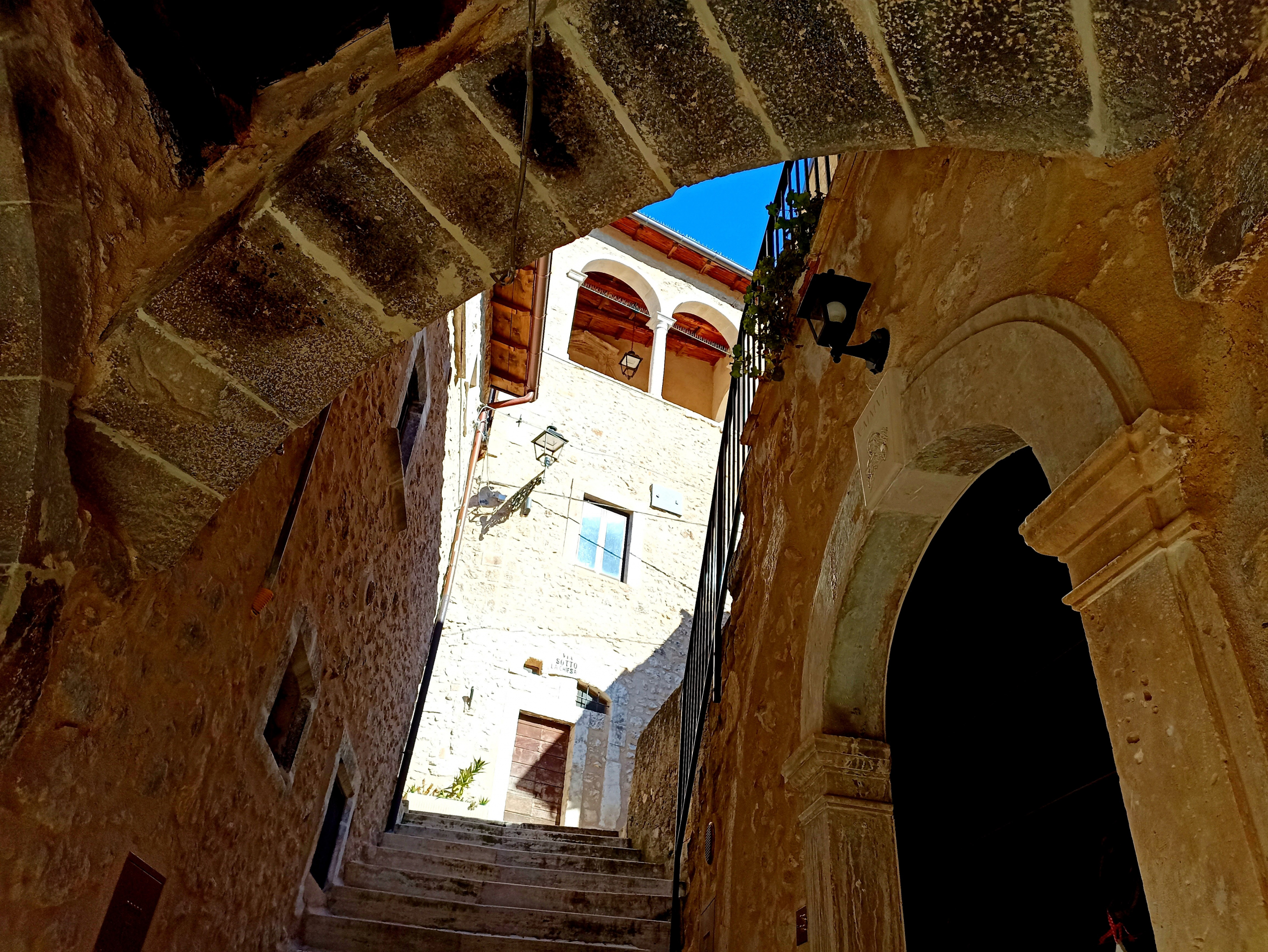The Church of St Sebastian is the current parish church. Its mighty, scarped masonry, with a slit on the long side, as well as the presence of the bell tower, testify to a defensive function of the building, which was only transformed into a church at the time of the L'Aquila bishop Ludovico Borgio (1475-1480), as a 15th-century tithe informs us. The late-Gothic portal on the main façade, with the Bernardine monogram of the Holy Name of Jesus, converges towards that date. The door, on the other hand, dates back to the 18th century and features precious carved wooden decorations. The transformation of the building into a church could be connected with the terrible plague epidemic of 1478 - the pestis maxima according to L'Aquila sources - bearing in mind that St. Sebastian is a protector against the plague par excellence.
The side entrance portal is accessed by means of a double flight of steps - dating back to the 17th century - leading to the loggia, from which there is a beautiful view of the plain. Here, the carvings on the doorway feature, in addition to St Jerome, St Sebastian and St John, the Madonna pushing a ship, the emblem of Navelli, and a forked mermaid.
The church has three naves; the roof is vaulted; the walls covered with Baroque and Neoclassical stuccoes. Behind the presbytery is the bell tower. In addition to the high altar dedicated to St Sebastian, there are twelve side altars. These include the altar - and canvas - dedicated to St. Charles Borromeo, perhaps an indication of the relationship between Milan and Navelli over saffron. The church houses some painted wooden statues and a silver processional cross from the 14th century. The Oratory of the Confraternity of the Blessed Sacrament is annexed to the church.
The underground vaults of San Sebastiano hold one of the largest and best-preserved deposits of natural mummies in Italy, so much so that they have appeared in international texts and documentaries. Before the municipal cemetery was built during the 19th century, it was here, as in the other churches, that the dead were buried: at San Sebastiano there are an estimated 800 bodies, a third of which have been recovered and are being studied at the San Salvatore Hospital in L'Aquila.


